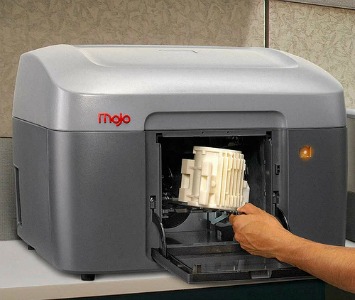Imagine if creating a solid, three dimensional prototype for anything you wanted was as simple as clicking “Print” from a computer. Well in this day and age, it is more or less that simple, thanks to a rapidly progressive technology called 3D Printing.
You can create a model of just about anything:
- A real prototype of an action figure you may have designed in Photoshop.
- A model of building’s blueprint made.
- A body part that could change a patient’s life.
How 3D Printing Is Changing Lives
Take for instance the case of Hu Wei, a 46-year old from Beijing, China.
He was working on a construction project when he fell three stories into a pile of wood. A beam struck him in the head, leaving him with a large portion of his skull caved in. The accident left him with limited motor functions, weakened vision, and impaired his ability to speak or write.
After the Chinese medical community consulted with experts from around the world, doctors scanned his skull, digitally designed a replacement for the missing part of his cranium and used 3D Printing, also known as additive manufacturing, to make the replacement using titanium mesh. Mesh is frequently used to support organs and tissue in reconstructive surgery.
The mesh, perfectly molded to fit his head, was implanted under his skill to give him a more symmetrical appearance.
More importantly, doctors hope that as the brain repairs, it can grow within the mesh and allow Wei to possibly regain some of his lost abilities.
In another case that occurred in China, a 12-year-old boy with bone cancer received a 3D printed vertebrae. The procedure was successful, allowing the boy to walk again and be able to lift his head.
How Does 3D Printing Work?
The technology, called stereolithography or solid imaging, was created in the mid 1980’s by Chuck Hull.
As advancements continue to develop with the size of the printers, materials used and printing precision, it’s becoming more clear that you can print just about anything.
The first step in printing is creating a design model, usually with Computer Aided Design (CAD) or some kind of animation software.
The design model provides digital data that communicates a digital blueprint---the exact shape, dimensions and appearance of the object is delivered to the 3D printer.
So the same images created with animation software to develop 3D characters in films like Shrek or Avatar can be used to print out the characters in the flesh, so to speak.
Once the printing materials are chosen (plastic, metal , paper or ceramics, for example) the printer then lays down one layer of material down at a time to build the model, using computer-controlled robotics.
It can take several hours, several days or even longer to complete a printing project, depending on the level of intricacy. Andrey Rudenko, an American engineer, built a 3D printer that used concrete to create a 12 feet high castle in Minnesota, layer by layer. That project took him three months to complete.
As the technology continues to improve, 3D printers are becoming much more affordable and accessible. At most, advanced heavy duty printers can cost over $500,000, but smaller ones designed for commercial use can be purchased around $1,000.
Most commercial printers available to the public print smaller plastic objects, but 3D printers can be built to accomplish just about anything.
3D printing has allowed some inventors and entrepreneurs avoid working with expensive engineers and developers to manufacturer a prototype.
Health researchers are continuing to experiment with 3D Printing for a number of uses, including custom dentures, artifical limbs, artificial bones, replicas of organs, bio-printing organ tissues, veins and skin, but the potential for this life saving technology is truly limitless.
To learn more about 3D Printing, visit these links.
· 3D Printers in Real Estate Industry

